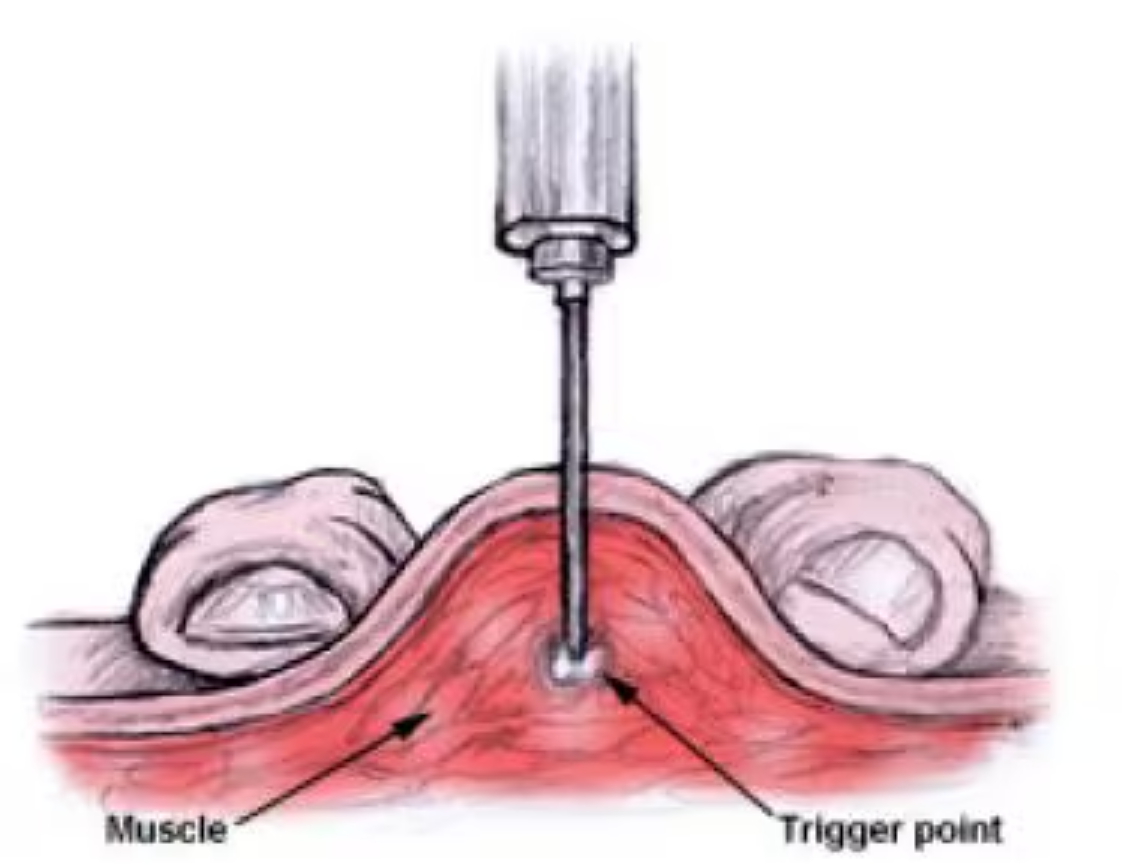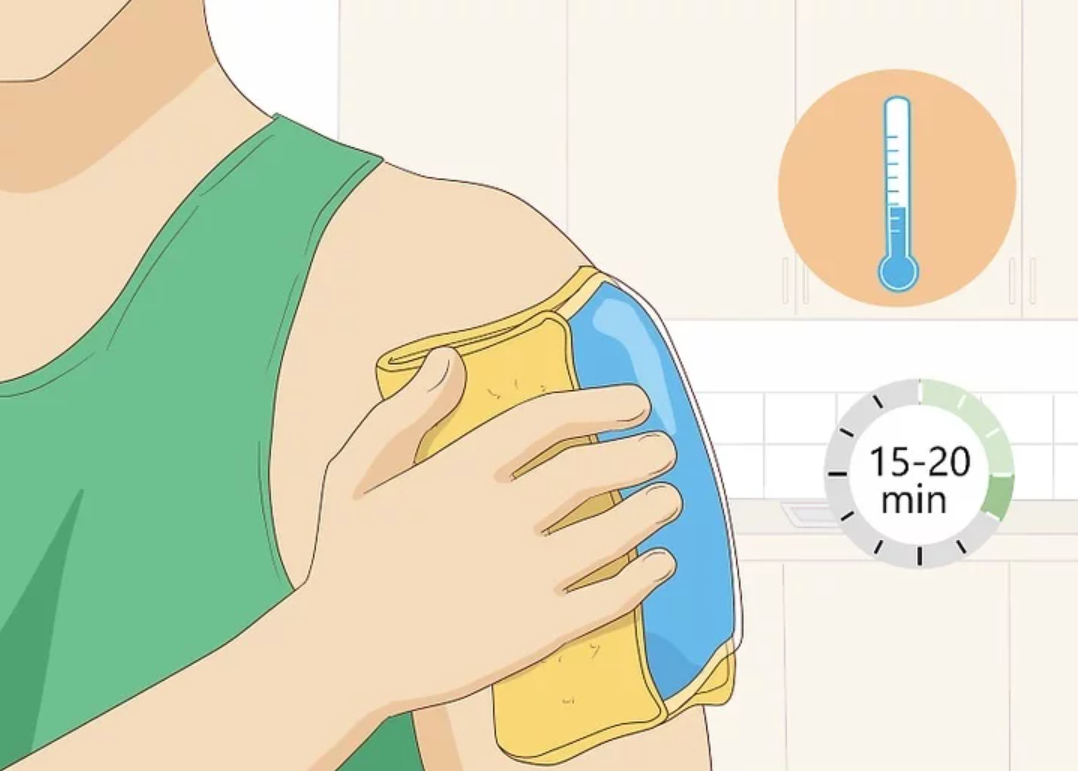
Key Takeaways
-
Trigger point injections are a treatment for muscle pain, specifically myofascial pain syndrome.
-
These injections can provide immediate relief and improve range of motion.
-
Side effects are generally mild but can include temporary discomfort or bruising.
-
The cost of trigger point injections varies, with factors like healthcare providers and insurance affecting price.
-
Patients often feel the benefits of trigger point injections quickly, with some variability between individuals.
What Is The Purpose of Trigger Point Injections?
Trigger point injections are designed to relax the knotted areas in your muscle, which are areas of muscle that have become tight and painful. When these points are pressed, they can cause pain in other parts of the body, a phenomenon known as referred pain.
Trigger point injection aims to relieve pain by targeting these knots, also known as trigger points. By injecting a solution such as lidocaine or procaine, to numb the area and reduce muscle tension. directly into the trigger point, the muscle can relax, providing relief from pain and improving function. In some cases, a corticosteroid medication may also be included to further reduce inflammation and pain. Saline solution alone can also be injected and may be effective for some patients.
Getting to Know Myofascial Pain Syndrome
Myofascial pain syndrome is a long-term condition that impacts the fascia, the tissue that connects muscles. This condition is identified by the existence of trigger points. It can result in ongoing pain, which can disrupt a person’s quality of life and daily routines.
There are many reasons for myofascial pain, including physical damage and stress-related muscle tightness. It’s crucial to realize that this syndrome isn’t the same as the muscle discomfort that follows a workout. It’s a chronic condition that necessitates particular treatments, such as trigger point injections, for effective management.
How to Spot Trigger Points and Address Muscle Discomfort
Trigger points are recognizable by their sensitivity, tension, and their ability to cause pain in various locations. These points typically have a particular pattern of referred pain, which can assist in pinpointing the precise areas that require treatment.
For treatment, a medical professional will place a tiny needle into the trigger point and inject a blend of anesthetics and, occasionally, corticosteroids. This combination can offer both instant and long-term relief, making it a favorite option for people who suffer from persistent muscle discomfort.
Benefits of Trigger Point Injections
Trigger point injections are known for their numerous advantages in pain management.
Relieves Pain
One of the main benefits of trigger point injections is how quickly they can alleviate pain. For many patients, they feel relief almost instantly after the procedure. This fast relief can be a life changer for those who have been suffering from chronic pain.
Reduced Rigidity & Increased Mobility
Trigger point injections offer a multifaceted approach to managing myofascial pain syndrome. By addressing the underlying taut bands within muscles (trigger points), this treatment can significantly enhance both functional mobility and overall comfort.
-
Enhanced Flexibility: Deactivating trigger points allows for improved extensibility of surrounding muscle fibers. This translates to a measurable increase in range of motion, particularly in commonly affected areas like the shoulders, neck, and back. Patients may experience a noticeable difference in activities such as head rotation or overhead reaching, tasks that were previously limited by pain or stiffness. Regaining this pain-free flexibility can significantly improve functional capacity in daily life.
-
Diminished Muscle Tone: Trigger point injections not only target pain but also effectively reduce muscle hypertonicity (increased muscle tone). This excessive tightness can significantly hinder even basic movements. With the alleviation of hypertonicity, everyday activities become more effortless and efficient. Imagine the difference between experiencing stiffness upon rising from a seated position and a smooth, uninhibited transition. Reduced muscle tone allows for improved movement coordination and a more unrestricted range of motion.
Improved Life Quality
By offering a respite from pain, trigger point injections can enhance a patient’s overall life quality. This allows them to sleep better, engage in activities they enjoy, and generally have a more positive and energetic outlook on life. Overall, having a positive effect on the patient’s emotional and mental well-being.
Potential Side Effects of Trigger Point Injections?
Trigger point injections are usually safe, but they do come with potential side effects. You should have a conversation about these with your healthcare provider before you have the procedure.
Short-term Pain or Bruising
Following the injection, you may feel a slight pain or see some bruising at the site of the injection. This is typically mild and will disappear after a few days. Using an ice pack and taking non-prescription painkillers can help alleviate this discomfort.
Photo credit: Wikihow
Uncommon Risks: Infection or Pneumothorax
Although uncommon, more serious complications like infection or pneumothorax (a collapsed lung) can happen. The risk is reduced when the procedure is done by a trained and experienced healthcare provider.
Cost of Trigger Point Injections
Many things can affect how much trigger point injections cost, such as how many trigger points need to be treated, what kind of medicine is used, where the clinic is located, and how experienced the healthcare provider is.
-
Typically, a trigger point injection session will cost you between $100 and $200.
-
Some places might have package deals or fees that are adjusted based on your income.
-
Always verify with your insurance what costs will be your responsibility.
Insurance and Personal Costs
Trigger point injections are generally covered by most insurance plans, especially when it’s a medical necessity. That said, you may still have to pay a copayment or deductible. If you’re uninsured, the cost can be quite high, so it’s crucial to talk about pricing with your healthcare provider before the procedure.
How Long Does It Take for Trigger Point Injections to Work?
Most patients are eager to know when they can expect to feel relief from pain after getting a trigger point injection.
Instantaneous Vs. Prolonged Benefits
Several people feel instant relief from pain after the injection, while others may observe a slow progression of improvement over the next few days. The duration of the relief can differ, with some patients feeling continuous benefits for a few weeks to several months.
Things like the root cause of the pain, overall health, and lifestyle can affect how well trigger point injections work.
MSK Doctors for Your Trigger Point Injection
At MSKDoctors, we’re your number one resource for finding experienced doctors and surgeons who specialize in musculoskeletal health. We know how important it is to find the right care for your unique needs, especially when it comes to something as critical and sensitive as musculoskeletal health.
Contact us today to learn more about trigger point injections and how they can help you live a quality life.
Frequently Asked Questions (FAQ)
What Can Trigger Point Injections Help With?
Trigger point injections are mainly used to help with muscle pain conditions like myofascial pain syndrome, fibromyalgia, and tension headaches. They are good for dealing with the painful knots that can form in muscles.
Do Trigger Point Injections Hurt?
Although the thought of getting an injection can be scary, most patients handle the procedure quite well. There might be a quick, sharp pain when the needle first goes into the trigger point, but it doesn’t last long.
How Frequently Can I Get Trigger Point Injections?
The regularity of trigger point injections can differ based on personal requirements and the duration of the discomfort. Some people may find relief from just one session, while others may need several treatments that are weeks apart. You should always talk to your healthcare provider to get a treatment plan that is customized for you.
Do Trigger Point Injections Heal Myofascial Pain Syndrome?
Although trigger point injections can significantly alleviate the symptoms of myofascial pain syndrome, they are merely a part of a larger treatment plan. They may not necessarily heal the condition, but they can play a vital role in pain management and function improvement.
What’s Next After a Trigger Point Injection?
Once you’ve had a trigger point injection, you should adhere to your healthcare provider’s instructions. They may suggest you rest, use ice or heat, or participate in physical therapy.


